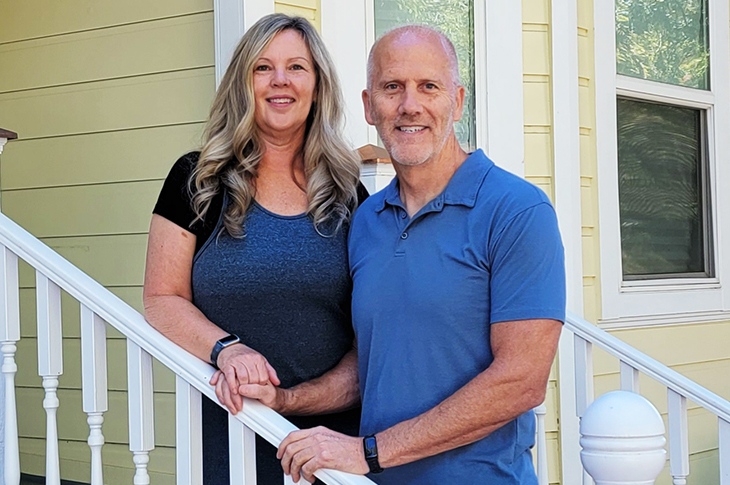Exercise does lots of great things for your body. But it’s not always kind to your skin. And we’re not just talking about pore-clogging sweat or bacne. Even if your gym looks clean and shiny, it’s probably crawling with microbes that can lead to infections, rashes, foot fungus, and more.
So, we talked with dermatologists to learn their top tricks for healthy, radiant, gym-proof skin. Here’s what they want you to know.
Your gym is a giant petri dish
Why is the gym so germy? “Bacteria thrive in warm, moist places making the gym the perfect environment for bacteria,” says Michael Horn, MD, a board-certified plastic surgeon in Chicago, IL. “Studies show that 70 percent of bacteria on fitness center equipment could potentially harm humans.”
The locker room and shower are obvious offenders. But the workout area is equally problematic. From treadmill and elliptical handles to CrossFit boxes, gym-based microbes are so widespread that one recent study of 16 fitness centers found that 38 percent of surfaces swabbed contained S. Aureus, the bacterium responsible for staph infections. And nearly 12 percent harbored antibiotic-resistant MRSA.
Skin SOS
Wiping down exercise equipment with a sanitizing wipe can go a long way in guarding against bacteria and fungi. But don’t stop there. These are the biggest gym-based skin hazards to look out for, plus tips to prevent them.
Your outfit. Skin troubles often start before you set foot in the gym, beginning with your workout clothes. “Many gym goers wear tank tops or cut off shirts which expose more skin to [bacteria-covered] surfaces in the gym,” says Dustin Portela, DO, a dermatologist with Treasure Valley Dermatology in Boise, ID. “You’ll be better protected if you wear a shirt with sleeves and shorts that are just a bit longer.”
And if you’re thinking of wearing the same outfit to run errands afterward? “Wearing sweaty clothes post work out won’t kill you, but it can wreak havoc on skin,” says Horn. “Oil and dirt can become trapped in wet fabric and may lead to clogged pores and bacne, plus bacteria in there can cause itchy rashes like folliculitis.”
Loose hair. “When you’re working out, sweat and dirt can get transferred from your hair onto your face,” says Horn. “So, it’s a good idea to keep hair out of your face by styling it into a bun or rocking a dry and clean sweatband.” Also, go easy on the hairspray, which can migrate onto your skin and mix with sweat during exercise, leading to clogged pores, irritation, and breakouts.
Your towel. As convenient as towel service may be, you might be better off without it. “The so-called “clean” towels at the gym may be delivered by the same transport as the soiled ones,” says Horn. “It’s wiser to bring a towel from home to cover mats and exercise balls while you use them.” There’s another nice thing about using your own towel, he says. You can mark the side that you usually lay on the equipment with a “D” for dirty with a Sharpie. That way, you’ll always know which side is safe to keep in contact with your skin and which side to avoid.
Supplements. Adding a scoop of protein powder to a shake or smoothie may be great for building muscle but not for your complexion. That’s because protein supplements, particularly whey protein, can act like androgens, hormones that may trigger acne, says Portela.
The locker room. At one point or another, 70 percent of us will contract athlete’s foot. Wearing flip-flops in the locker room and shower is an excellent first line of defense. Horn also recommends clipping your toenails short to prevent fungi from getting trapped in the crevices. He’s also a fan of draping a towel over the locker room bench to protect from any microbes that may have taken up residence there.
Your gym bag. When you’re done working out, it can be tempting to pop your used gym clothes into your gym bag to wear again next time around. Not so fast, says Portela. Even if you didn’t sweat much—or your outfit is made from anti-stink material—it’s likely picked up a lot of bacteria. Instead, place dirty clothes into a plastic bag before putting them in your gym bag, so they don’t coat it with germs. Then, toss them in the wash when you get home and pack a nice clean outfit for next time.
Delayed showering. The sooner you can shower after your workout, the better, says Portela. Ideally, he recommends using body wash and a clean towel. But if you don’t have time? “Pick up some acne cleansing wipes with a low percentage of salicylic or glycolic acid to help remove excess sweat and oil from your skin, as well as to neutralize harmful bacteria and fungus,” he says.
Finally, don’t forget to moisturize. “Skipping this essential step can unknowingly dehydrate your skin, causing oil glands to overcompensate by producing an oversupply of oil,” says Horn. “Use a moisturizer that’s been produced for your specific skin type and condition immediately after cleansing for the best results.” Then enjoy the glow!
The post Gym-Proof Your Skin appeared first on Fitbit Blog.










